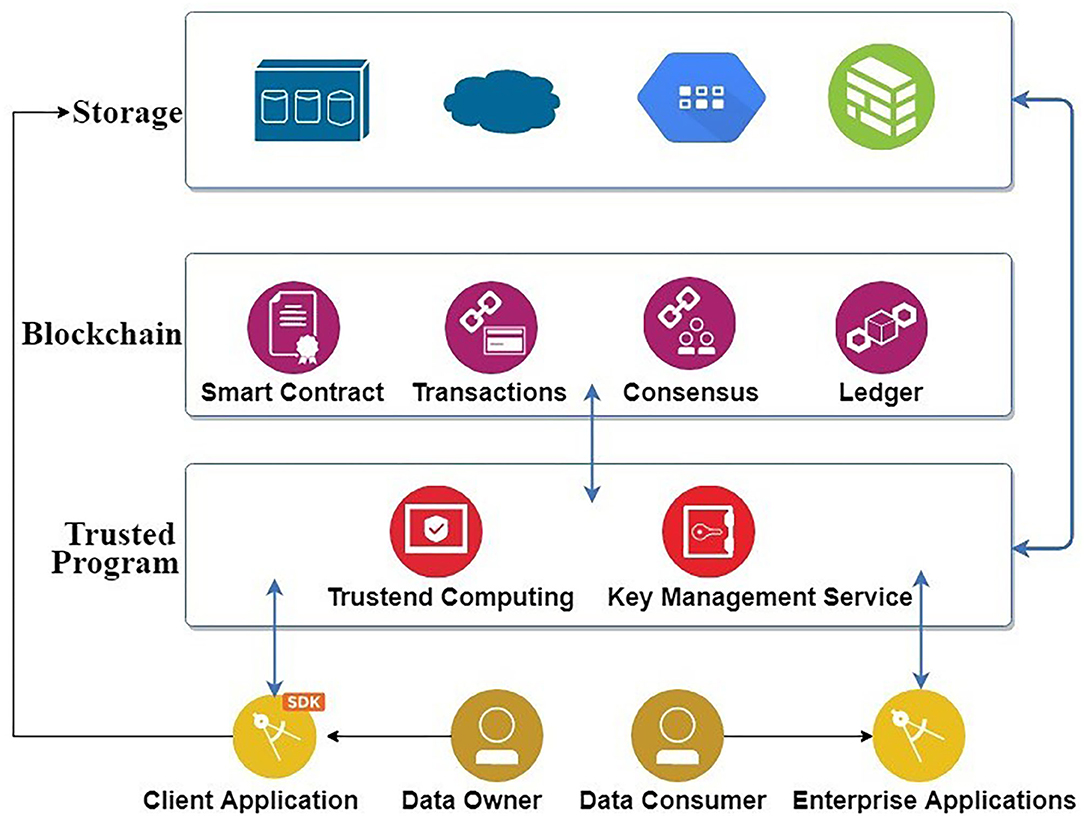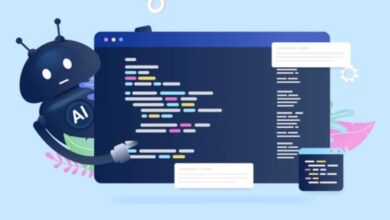Top 10 projects in Data Science & AI to learn in 2023

Getting into the current dynamic field of data science & AI necessitates keeping up with and also building on industry trends. Building your main portfolio is the right path to take, and also solving existing problems that can lead to industry breakthroughs is ideal. Finding the right project that fits your main knowledge, matches industry requirements, and gives you real-world practical experience takes time and effort.
By adequately utilizing relevant data, data science and AI aids in the resolution of real-world problems. Companies nowadays use data science professionals’ information to understand customer behaviour, forecast sales, and indicate the future of the product in the market where it is being launched. This is why companies looking for data science professionals prefer a Data Science Certification from a reputable university with a curriculum designed to build industry-valued skills.
We’ve compiled a current list of trending data science projects for you to look into to improve your resume and land a job of your choice in 2023!
Aspiring machine learning engineers want to mainly work on ML projects but need help to develop exciting ideas. It is critical to find data science or machine learning project ideas that interest and motivate you as a machine learning beginner or final-year student. When deciding on a good machine learning project, to begin with, you must consider the dataset’s domain, the dataset’s complexity, and the dataset’s size. To start working on your machine-learning portfolio, you’ll need some cool, fun, and innovative machine-learning project ideas.
To build your data science or machine learning portfolio, consider all potential ML project ideas that interest you. Once you’ve gathered a few beginner machine learning project ideas for 2023, you can select the most intriguing project ideas and begin working on them so that you can add those machine learning projects to your resume.
1StepGrow
ONESTEP GROW is an authorized Education Institute that shares each individual’s and institution’s vision for Digital Transformation.
They believe digital transformation will make us more intelligent and accurate, so our vision is to bring total digital transformation to the workplace. To achieve their vision, they work to train each student and professional in the most recent market technologies.
Because of the rapid changes in technology and its application, every individual needs to grow with time more than ever before.

They teach their students with a hands-on approach to effect real change in society. Their courses are well-designed to prepare students for theoretical understanding, practical understanding, and exposure to real-world projects that set them apart from the competition.
They envision providing the best and most advanced training to our candidates, allowing them to build great careers while also allowing companies to value the quality of skills and knowledge they find in their students. Their shared goal is to usher in a new digital transformation era using cutting-edge technology.
1stepGrow is a fantastic academic platform where you must put in effort and progress up the ladder. This is an excellent place to start if you want to work as a digital marketing professional. It doesn’t matter where you are now, but if you want to grow and reach the top of your career ladder, 1stepGrow is the ladder that will help you get there.
List of the top ten projects in Data Science & AI to learn in 2023 –
1. BFSI Project
Banking, financial services, and insurance (BFSI) is the umbrella term for businesses that offer various financial products or services. This includes universal banks that provide various financial services and companies that operate in one or more of these economic sectors. Commercial banks, insurance companies, non-banking financial companies, cooperatives, pension funds, mutual funds, and other smaller financial entities are all part of BFSI.
The global BFSI industry faced severe turmoil in the early twenty-first century, when a series of crises, such as the subprime mortgage crisis in the United States and the Great Recession worldwide, which began in 2008, caused a massive setback, resulting in negative growth. According to a 2013 report, the industry was getting back on track.

Banking may include core banking, retail banking, private banking, corporate banking, investment banking, and cards. Stock brokerage, payment gateways, and mutual funds are examples of financial services. Insurance includes both life and general insurance.
Information technology (IT), information technology-enabled services (ITES), and business process outsourcing (BPO), as also technical/professional services firms that manage data processing, application testing, and software development activities in this domain, commonly use this term.
2. Supply Chain Project-
Companies are increasingly investing in the process and tools of sales and operations planning (S&OP). Demand planning accuracy is ranked first on the list of key supply chain performance indicators by Gartner, an American technology research and advisory firm.
Demand forecasting is getting more sophisticated. Powerful statistical tools can model consumer demand patterns, and demand shaping and sensing are becoming more popular, putting demand planning in a more proactive position with the markets. These advancements will result in service and working capital benefits in supply chains that use forecasts to set inventory levels, also known as make-to-stock supply chains.

This emphasis on demand planning resonates strongly with businesses that must respond quickly to consumer market forces by fulfilling B2B orders from retailers or B2C orders through Omni-channels.
When discussing current supply chain trends, project supply chains are frequently overlooked. Project supply chains provide products that must be configured or even designed from scratch for a specific customer. Consider a new power plant, an aeroplane, or a telecommunications network. These supply chains have a global footprint, several internal and external production points, several-month lead times, and, most importantly, critical links with engineering and commercial teams.
They are, however, an essential part of global trade. When we look at the 2015 Fortune 500 classification by sector, we can see that companies that derive a significant portion of their revenue from project supply chains, such as General Electric and Boeing, account for about 12% of the total income of the list. It is worthwhile to examine the dynamics and challenges of project planning and how businesses can succeed with this approach.
3. Logistics Project (10 mins delivery)-
Project Logistics is the management of all aspects of your building or construction project’s logistics across complex supply chains. We do everything from preparing items for transport to arranging transportation via sea, air, or land freight, storage, onward travel and unloading at the final destination.

This frequently entails transporting large, heavy, expensive, and even hazardous items worldwide, sometimes to inaccessible locations, and dealing with the associated paperwork. Import and export documents, customs clearance, insurance and hazardous materials documents, dealing with freight charge negotiations, freight consolidation, tracking and supervision, and more are all part of this.
With so much at stake on these massively expensive large-scale projects, getting everything to where it needs to be safely and on time is critical – and this is where your Project Logistics experts come in.
4. Predictive Maintenance Project (Manufacturing)-
Predictive maintenance refers to using augmented analytics and machine learning to monitor the state of machinery. Based on sensor data, predictive maintenance systems evaluate potential malfunctions. This allows organizations to avoid costly problems while causing minimal disruption to daily operations.
Why is it such a big deal nowadays? The popularity of predictive maintenance techniques can be attributed to the use of Artificial Intelligence and Big Data. Using Big Data, the latter assists businesses in accurately predicting maintenance tasks.
Predictive maintenance tools are broadly classified as predictive analytics. Furthermore, this type of monitoring is sometimes referred to as condition-based monitoring. It consumes IoT data to monitor the condition of your equipment. Predictive maintenance techniques complement other types of maintenance.
Let’s take a look at some of the most common types of maintenance used in businesses:
- Reactive means that equipment is used until it fails.
- Preventive maintenance is planned maintenance that includes regular condition checks.
- Prescriptive – intelligent asset maintenance scheduling and planning,
- Predictive (PdM) or condition monitoring algorithms monitor the equipment during regular operation.
- Condition monitoring is the most effective because it eliminates the need for constant maintenance. Unless algorithms show otherwise, they may never attend to some components.
5. Sales & Marketing Project-
Sales are “operations and activities involved in promoting and selling goods or services.” The process or technique of promoting, selling, and also distributing a product or service is referred to as marketing.
These statements highlight two aspects of the relationship between sales and marketing:
- Each group’s responsibilities are inextricably linked.
- Marketing is critical in assisting sales.
In practice, the marketing department is usually in charge of increasing product awareness and generating high-quality leads for the sales team. A “marketing-qualified lead” meets specific criteria established by a marketing department. A “sales-qualified lead” supplements the initial standards set by marketing to help find the most valuable prospects.

A sales department may occasionally complain that marketing leads must meet the sales team’s standards. However, the possibility of conflict also represents a chance for collaboration. The more effectively the two groups can share ideas, the more closely their definitions will likely be aligned.
Responsibilities in Sales and Marketing
Sales and marketing functions, while sometimes separated, frequently overlap. By combining efforts, businesses that recognize critical areas of overlap can get more value from their teams. After all, the end goal of both sales and marketing is the same: to increase sales.
Responsibilities in Sales
Following up on leads generated by a marketing department is an essential sales function. A structured handoff process is typically developed by successful businesses to ensure that each marketing-qualified piece of information receives appropriate and timely follow-up from a sales team member.
Relationship development. The era of the “hard sell” is fading. Relationship building is emphasized in modern sales to help build trust between a buyer and seller. Effective salespeople can identify the buyer’s needs and craft a persuasive—but not pushy—message to help differentiate the company’s product.
Closing-Most salespeople are evaluated based on their ability to convert leads into customers. At the same time, some people associate the conclusion of a sale with a face-to-face meeting and handshake, and many businesses also close sales online or over the phone. This can give more employees the responsibility of closing a sale.
Client retention is the responsibility of both sales and marketing. A sales team member can demonstrate an interest in long-term client success by checking in with an existing client, not just a one-time deal. Building solid relationships over time can help improve retention and lead to “upsells”—additional sales beyond the initial purchase.
Responsibilities in Marketing
Awareness. The first step in the sales process is to raise awareness of a product or service. A successful awareness-building campaign may assist a prospect in recognizing a brand or product name or ensure that a company is placed on the shortlist for purchasing consideration.
Engagement. To deepen a consumer’s connection to a company or product, engagement efforts build on an initial awareness campaign. Marketing materials aimed at a meeting may be more extended (for example, a whitepaper or video) than a more straightforward awareness piece (e.g. direct mailer or radio advertisement).
Conversion. A conversion is the critical transition of a prospective customer from an unknown to a known lead. A modification may be the completion of a web form, the start of a web chat, or a phone call to a customer service line for marketing teams.
Retention. Even after a purchase, a marketing team can assist a company in increasing its repeat customers. Marketing’s retention function assists in maintaining awareness and engagement after a sale. This could include email newsletters or webinar invitations that help a consumer get more value out of a product. Marketing retention is especially important for subscription services.
6. Recommendation engine in eCommerce-
A recommendation system is a tool that makes online recommendations using a set of algorithms, data analysis, and artificial intelligence (AI).
In the retail industry, recommendation systems are a very popular and effective paradigm. Customers can find items they like more easily with the help of a recommendation system. Furthermore, they are presented with items they would never have considered purchasing but which actually meet their needs.
![E-Commerce Recommendation Engine with Collaborative Filtering | by Divya Chandana | Web Mining [IS688, Spring 2021] | Medium](https://miro.medium.com/max/1400/0*MhGxccxeUOEkX98u.png)
The advantages: Customer behavior research
Customer behavior analysis focuses on understanding the types of customers; what they like, what they don’t like, how they interact with the items, customer value, and so on. We can predict a customer’s future needs if we can model these aspects of them.
The following are the primary advantages of using a customer behavior analysis system:
Increased sales, improved customer understanding, and long tail strategies.
The main advantage can be summarized in three words: increased sales. According to McKinsey, recommendation systems drive 35% of all Amazon purchases and 70% of Netflix purchases, and the implementation of recommendations significantly increased their sales. Furthermore, during the COVID-19 pandemic, many retailers went online, digitalized their businesses, and altered their business culture in order to adapt to the new and constantly changing circumstances.
The second advantage stems from a better understanding of customers. This is where customer profiling comes into play. By profiling customers, we can better understand their behavior and, as a result, better understand and meet their needs, which can be rewarded with higher customer satisfaction and loyalty. We can easily create automated marketing campaigns and personalize them based on customer analysis, in addition to increased customer satisfaction.
The following advantage is a much better strategy for long-tail items. Long tail items are niche and hard-to-find items that are very specific and unique, with only a small group of people looking for them. Customers benefit from tools such as recommendation systems because they can find products outside of their immediate area and items they would not have had access to otherwise. From the perspective of a supplier, holding items in a warehouse, hidden from customers who want them, could be a very profitable strategy.
7. Voice assistant like Siri-
Siri Projects provides construction of residential and commercial buildings, interiors, landscaping, and end-to-end consultation in creating an ambient and aesthetic home and office décor. Siri is Apple’s personal assistant for iOS, macOS, tvOS, and watchOS devices that are powered by artificial intelligence and use voice recognition (AI).
Siri responds to users’ spoken questions by speaking back to them through the device’s speaker and displaying relevant information from certain apps, such as Web Search or Calendar, on the home screen. Users can also dictate emails and text messages, read received emails and messages, and perform a variety of other tasks using the service.
Siri was created by combining various sources, projects, and technologies. The DARPA funded the Cognitive Assistant that Learns and Organizes (CALO) project, which aimed to develop a personal assistant using machine learning technologies. SRI International, a nonprofit research institute based in Menlo Park, California, used the CALO project’s technologies and framework to launch the spin-off project that would eventually lead to the creation of Siri.
Siri was made possible by Nuance Communications, a software company based in Burlington, Massachusetts, that began as a spin-off of SRI International. In 2007, members of the SRI International team decided to form Siri, Inc., a new startup company. Dag Kittlaus and Adam Cheyer, both SRI researchers, served as CEO and vice president of engineering, respectively, while Tom Gruber served as CTO.
Apple purchased Siri, Inc. in 2010, which resulted in Siri’s current incarnation as a native feature on some iOS devices. The service debuted on the iPhone 4S in 2011; in June 2012, Apple announced that with the release of iOS 6, it would add Siri to the third-generation iPad and integrate Siri with third-party apps. Siri is not available on previous iPhone or iPad models.

When the scheduled artist was unavailable, ScanSoft, a software company that merged with Nuance Communications in 2005, hired voiceover artist Susan Bennett. Bennett recorded four hours of her voice every day in a home recording studio for a month, and the sentences and phrases were combined to create Siri’s voice. Bennett had no idea she had become Siri’s voice until a friend emailed her in 2011. Despite the fact that Apple never acknowledged Bennett as the original Siri voice, audio experts at CNN confirmed it.
The original Australian female voice was provided by Karen Jacobsen, a voiceover artist best known for her work on GPS systems. Siri’s British male voice was provided by Jon Biggs, a former tech journalist.
8. Healthcare project in clinical research & pharma-
Clinical research and pharmaceutical projects in healthcare Project management in healthcare aids in the smooth operation of a medical facility. To be a healthcare project manager, you must be able to design and manage project phases. If you enjoy assisting others and organizing tasks, this could be the perfect position for you. In this article, we will look at the purpose and stages of healthcare project management, as well as how to become a healthcare project manager.
Project management in healthcare is an organizational process that improves the operation of medical facilities. Its mission is to resolve operational issues and implement policies that improve patient care and foster positive relationships with stakeholders. Effective project management can help to improve the following areas:
A healthcare project manager prioritizes clear and thorough communication between medical staff, such as doctors and nurses, as well as encounters between physicians and patients. Managers also make certain that hospital administrators have up-to-date patient and insurance information in order to keep health records and the workplace organized.
Productivity can help a hospital run more efficiently and handle an influx of patients during a healthcare emergency. Project management assigns tasks to employees and evaluates their performance.

Allocation of resources: Budgeting is another aspect of project management. Managers keep track of organizational spending habits and allocate funds to specific departments. Oncologists, for example, may need permission from healthcare administrators to fund a clinical trial for cancer research.
9. Oil & Gas industry project-
Oil and gas industry projects have unique characteristics that necessitate a different approach to project management. The development of any country is dependent on the development of its energy reserves through onshore and offshore exploration, drilling, and increasing facility capacities.
As a result, these projects require management that is appropriate for their characteristics, and project management is the primary tool for achieving project success. Most engineers study all subjects but specialize in project management in housing, administration, and commercial buildings, among other things. However, oil and gas projects have unique management requirements and characteristics from the owners, engineering offices, and contractors.

This volume is not only useful for graduating engineers, new hires, and students, but it is also an invaluable addition to the library of any veteran project manager as a reference or handy go-to guide. It is also intended to be a refresher for practising engineers, as it covers all project management topics from an industrial standpoint, specifically for petroleum projects, making it the ideal desktop manual.
10. IT industry projects in Cyber Security, Blockchain, etc.-
As you are probably aware, a security breach or attack can severely harm or even destroy your business. By implementing strong cybersecurity measures at your organization, you can protect yourself from hackers, malware, breaches, and other cybercrimes.
IT service providers will assist you in protecting yourself from cyberattacks. In fact, one of the most important projects you can outsource is cybersecurity. Look for a company with a track record in cybersecurity, as well as employees who specialize in it. This will ensure that you are fully protected against attacks and threats.
The combination of technologies, protocols, and methods known as “cyber security” is intended to protect networks, devices, programs, and data from attacks, damage, malware, viruses, hacking, data theft, and unauthorized access. The primary goal of cyber security is to protect the confidentiality of all business data from external and internal threats, as well as natural disaster disruptions.

While the zero percent unemployment rate is certainly compelling, it is critical to consider other factors before embarking on a career in cybersecurity. Some of the reasons why cybersecurity is a good career choice are as follows:
Opportunities for Career Advancement are Endless
The increasing intensity and prevalence of security breaches in an ever-changing digital landscape clearly indicate the cybersecurity industry’s escalating demand and growth potential. There are numerous opportunities for individuals who want to advance their careers in cybersecurity.
High-Paying Job Positions
Cybersecurity is a good career choice not only because it provides numerous opportunities for advancement but also because it is one of the highest-paying industries. Cybersecurity Analysts saw a 16.3% average salary increase between 2019 and 2020, according to Dice’s salary report, with an average annual salary of $103,106.
There is no room for boredom in the workplace.
Cybersecurity solutions are constantly evolving in response to new technologies and security threats. New skills and roles emerge in response to evolving threats and technologies. There is no room for boredom in this profession.
Job Contentment
The ever-expanding cybersecurity industry presents enormous challenges to its employees. This allows security professionals to constantly learn and develop in order to achieve job satisfaction.
Conclusion
There is no such thing as a difficult data science project if you have adequate knowledge of the appropriate tools and techniques. In fact, working on a variety of projects is the best way to test the practical application of any technology. It provides you with the necessary exposure and improves your problem-solving abilities.
We hope that the project ideas presented in this blog will help you significantly improve all of your Data Science skills. However, if you are new to the Data Science field and would like to learn Data Science and build similar models for technological advancements, we also recommend that you also take a look at the online course on 1StepGrow to learn and upskill in the Data Science world with experienced and expert professionals.
You can learn any Data Science project with the right set of knowledge, guidance, and tools. No level is too difficult for students to master. As a result, all of these live projects are an excellent way to improve one’s skills and make rapid progress toward mastery.
Edited by Prakriti Arora




